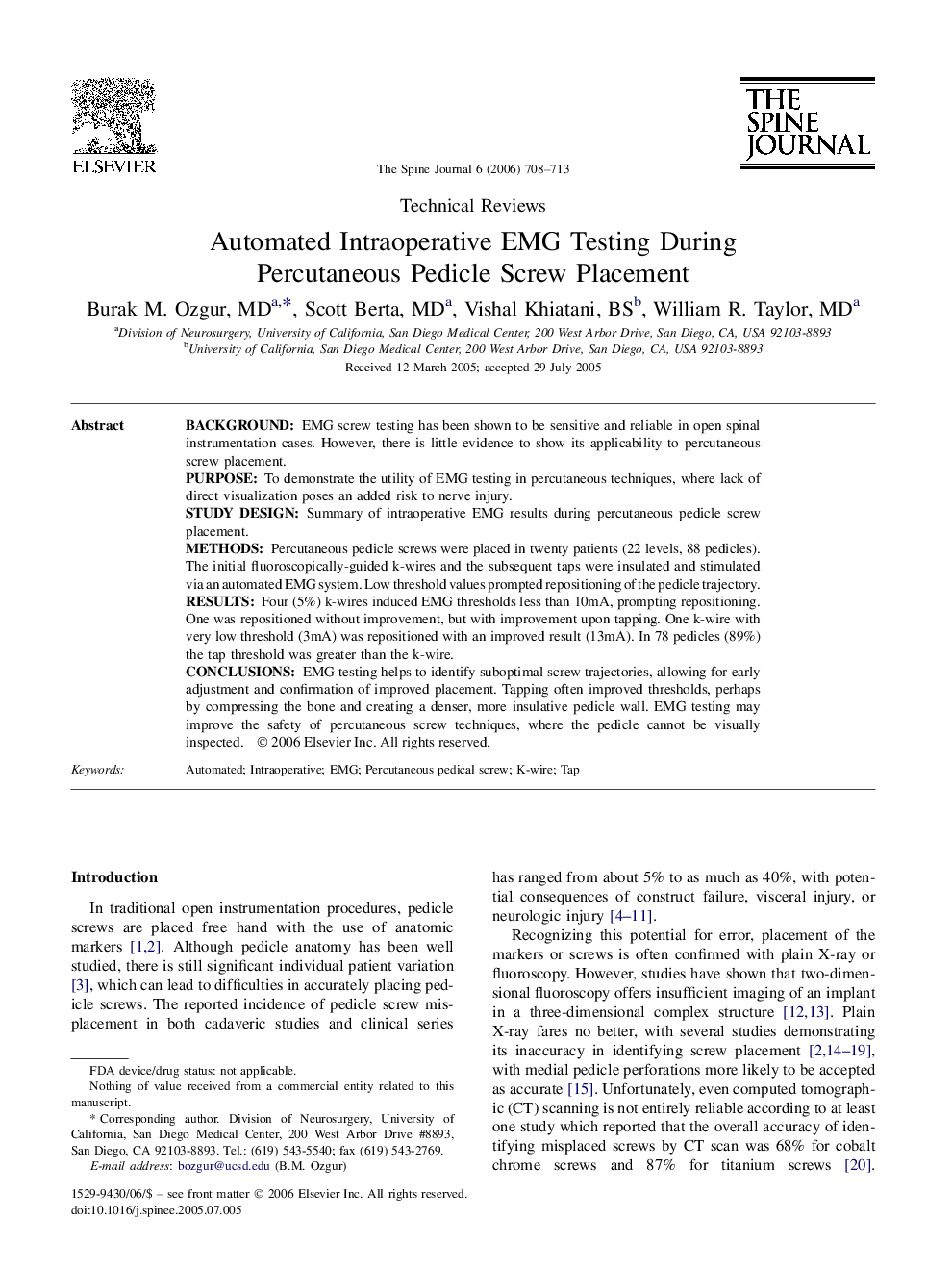| Article ID | Journal | Published Year | Pages | File Type |
|---|---|---|---|---|
| 4100128 | The Spine Journal | 2006 | 6 Pages |
BackgroundEMG screw testing has been shown to be sensitive and reliable in open spinal instrumentation cases. However, there is little evidence to show its applicability to percutaneous screw placement.PurposeTo demonstrate the utility of EMG testing in percutaneous techniques, where lack of direct visualization poses an added risk to nerve injury.Study designSummary of intraoperative EMG results during percutaneous pedicle screw placement.MethodsPercutaneous pedicle screws were placed in twenty patients (22 levels, 88 pedicles). The initial fluoroscopically-guided k-wires and the subsequent taps were insulated and stimulated via an automated EMG system. Low threshold values prompted repositioning of the pedicle trajectory.ResultsFour (5%) k-wires induced EMG thresholds less than 10mA, prompting repositioning. One was repositioned without improvement, but with improvement upon tapping. One k-wire with very low threshold (3mA) was repositioned with an improved result (13mA). In 78 pedicles (89%) the tap threshold was greater than the k-wire.ConclusionsEMG testing helps to identify suboptimal screw trajectories, allowing for early adjustment and confirmation of improved placement. Tapping often improved thresholds, perhaps by compressing the bone and creating a denser, more insulative pedicle wall. EMG testing may improve the safety of percutaneous screw techniques, where the pedicle cannot be visually inspected.
